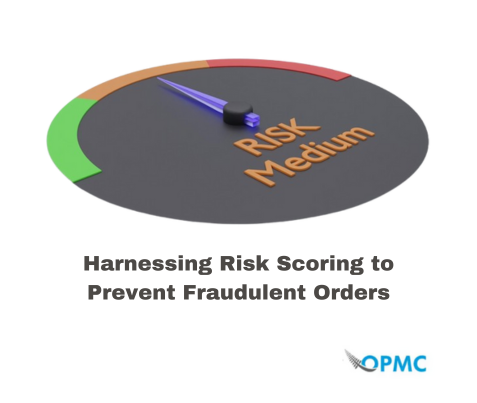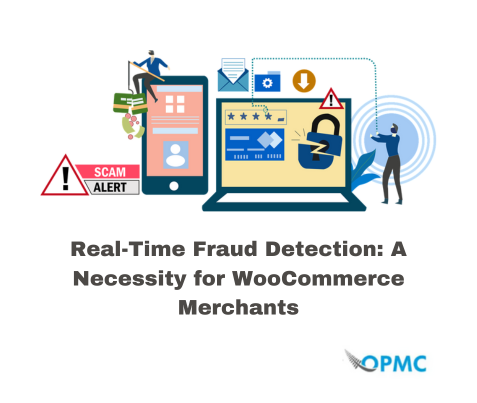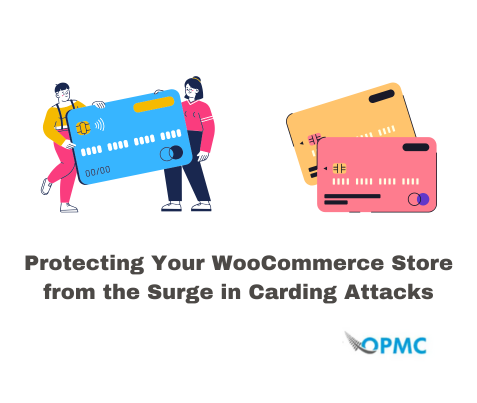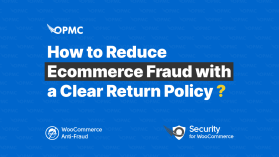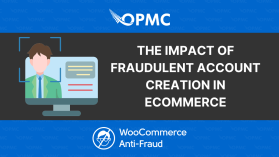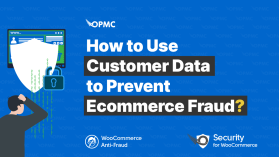Return fraud is one of the most common types of fraud, with many companies experiencing some kind of return fraud every year.
The costs associated with return fraud can be high, so it’s important to understand what you’re up against if you want to minimize your risk.
The last thing you want is to lose 10-15% of your profits because of returns that were never valid to begin with. Unfortunately, many bad actors are happy to take advantage of your kind return policies.
While you can use powerful tools like our Anti-Fraud for WooCommerce plugin, it also helps to educate yourself on what return fraud is and how it can affect your online business.
What is Return Fraud?
Return fraud is a form of fraud that occurs when a person returns an item to get money back. This can happen at any point in the return process, from the store to online, and even without a receipt. A fraudster is abusing your return policy in some way to profit.
The most common scenario involves someone purchasing something with their credit card, using it as if it were their own, then returning it for cash or gift cards. The store will be none-the-wiser because there are no visible signs of tampering or destruction on the returned product, so they’ll accept it without hesitation.
This is a challenging line to walk because offering a return policy helps improve customer loyalty and the overall online shopping experience. However, you need some preventative measures in place to lower the chances of return fraud happening to your ecommerce business.
How Does this Affect the Ecommerce Industry?
Return fraud affects the ecommerce industry in many ways. It’s costing merchants, consumers, and even the government a lot of money.
Merchants pay for return fraud when they have to issue a refund on an item that was never returned or sold in the first place. For example, if a customer returns an item without it being purchased at your store, you lose out on that profit.
And if you charge credit cards for refunds without verifying that they were not fraudulent purchases (e.g., by checking with your issuing bank), then you could be liable for chargebacks from your banks or financial institution.
Consumers can be harmed by this type of scam because they may not know how much time has passed before their identity is stolen by those who purchase items with stolen credit card information.
Millions to billions of dollars are lost every year to fraud schemes, just like return frauds from bad actors.
What are the Types of Return Fraud
1 – Receipt fraud
This is the most common return scheme, and it’s also one of the easiest to avoid. Usually, receipt fraud involves a shopper returning a product for cash with an altered receipt. The shopper will change the price on their receipt and then use that altered document in place of their original purchase record.
Retailers can help prevent this type of con by having employees verify receipts against products using various security features such as barcodes or unique serial numbers (or both).
It also helps to keep track of returns by each individual account your users have set up on your ecommerce storefront.
2 – Returning stolen items
Return fraud can take many forms, but it generally involves some kind of deception by the perpetrator. For example, one type of return fraud is when a person who has stolen an item returns it to the store for a refund. In this scenario, the perpetrator will purchase the goods with a stolen credit card or by using a stolen identity.
They might have transferred cash from an ATM machine or even used gift cards from their friends and family members without their knowledge.
Then, all they need to do is return the stolen item purchased from another retailer or taken from someone else and get the full price from your company in return.
3 – Bricking
Bricking is a type of return fraud that occurs when you “brick” a product. What do we mean by brick? A brick is a piece of hardware that has been intentionally damaged so badly it cannot be used anymore.
This can be done in many ways, but the most common method involves cracking open the device and exposing its circuitry to moisture or some other substance that breaks down the machine’s ability to function.
This could be replacing an iPhone’s screen with a damaged one, removing a CPU from a new computer, or taking the gaming console apart for key parts to be sold later on. Most of the time, this ecommerce return fraud occurs in tech-related businesses.
4 – Empty box fraud
Empty box fraud is when a fraudulent return is made by sending back an empty box to the vendor. The customer receives a full refund for their item, and the seller loses the cost of the product. The buyer will say they received the box is empty, and you have to return their money or risk getting a bad review that isn’t true but still hurts your bottom line.
It may not seem like much money on one transaction, but if you consider how many items are sold online each day, it adds up quickly!
How can you prevent empty box fraud? This type of fraud can be challenging to detect as it requires careful inspection of returned packages by your team. You should look out for items that have been opened up and resealed with tape or glue.
5 – Price arbitrage
There are many different ways a customer can try to game the system and get a refund on an item that wasn’t actually purchased.
One such method is called price arbitrage, which occurs when a customer buys an item at one price and returns it to another store for a refund. This doesn’t sound like a fraud at first glance, but there’s actually something heartless about this practice.
The fraudster is getting money from both stores without spending any of their own cash. It’s not illegal per se (unless they catch you), but it’s definitely unethical and morally questionable. Keeping your prices competitive is the best way to avoid this fraud.
6 – Returns after purchasing with a stolen credit card
This is the most common type of return fraud, and it’s usually committed by a customer who knows exactly what they’re doing. They buy an item using someone else’s credit card number and then return the product for cash, or they steal the item without paying for it in the first place.
You can implement things like requiring CVV info, matching the address to the card, ensuring the purchase is in an IP relative to the location of the buyer on the card, and other key tactics we’ve outlined in fraud prevention articles.
You Have to Stay Alert
You, as a merchant, have to be alert for each and every type of return fraud out there. The reason is simple: it’s a big problem for the ecommerce industry. You’re not alone in this fight—the economy as a whole loses a ridiculous amount of money each year to fraudulent returns.
To protect yourself from these losses and ensure that you can continue doing business at the same rate while still turning profits, it is important that you understand what types of return fraud exist so that you can identify them when they happen on your site and prevent them from happening again in the future.
We can’t stress enough that you invest in a security tool like our Anti-Fraud for WooCommerce plugin. Having an automated system in place that verifies, analyses, and prevents fraudulent purchases lowers the risk of anyone returning items other than for legitimate reasons.
Conclusion
We hope this article has helped you understand what return fraud is and how merchants can protect themselves against it.
Remember to always check the account info of customers purchasing with a gift card, don’t accept returns without a receipt, and make sure that the item being returned hasn’t been bought using stolen credit cards.
Visit our store today!
Get a powerful boost to your security, customer support, inventory management, and more…

